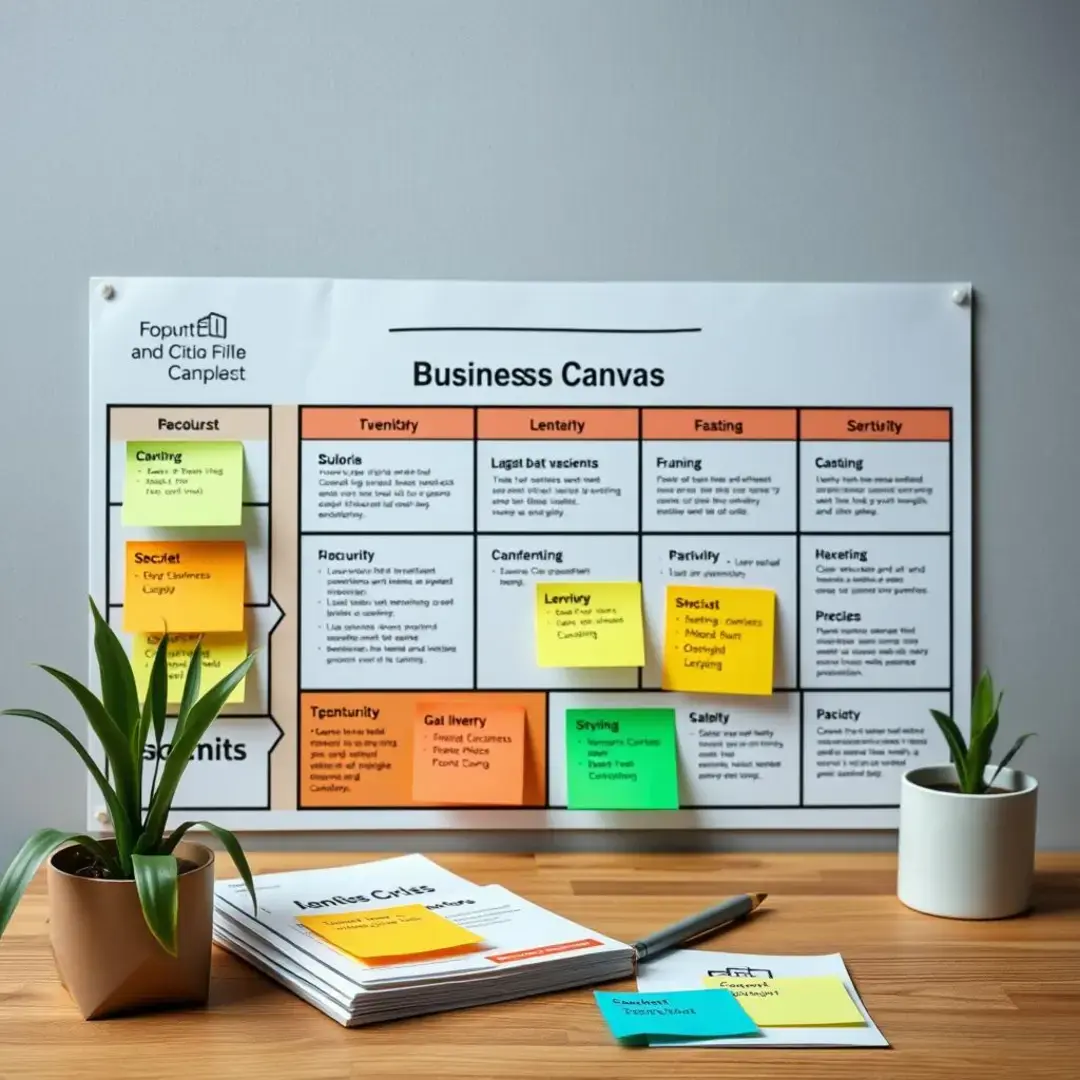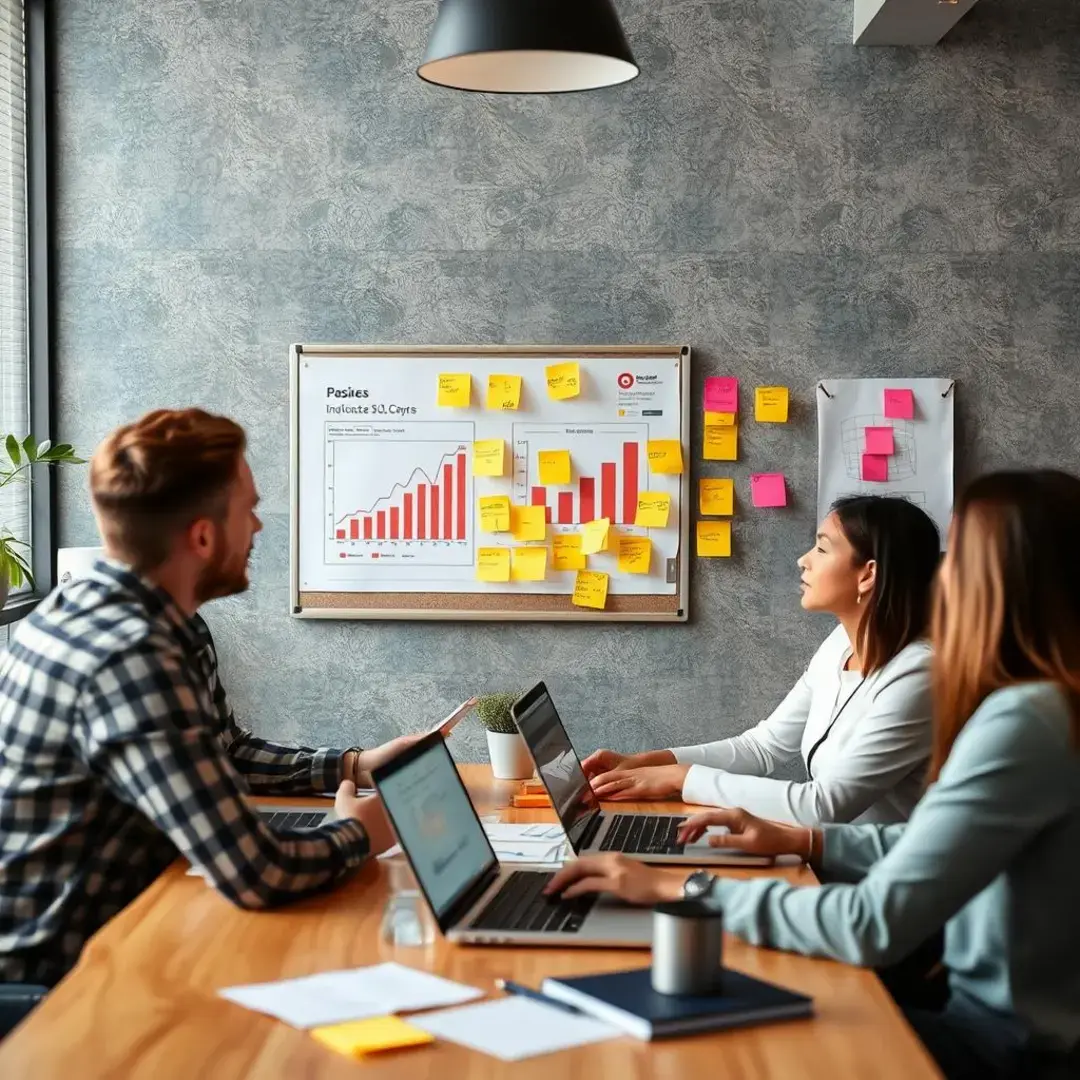Business Model Process: A Step-by-Step Guide
Understanding the core components of a business model

Defining your value proposition
To create a successful value proposition, it is essential to begin with a deep understanding of your target customers. Identifying their needs and pain points can guide the development process significantly. Conducting surveys, interviews, and market research will help uncover what your audience truly values. This understanding not only enhances product alignment with customer expectations but also enables more tailored solutions.
After identifying your audience’s needs, the next step is to articulate a unique and compelling value proposition. This statement should clearly communicate how your product or service meets those needs effectively. It is vital to differentiate yourself from competitors by highlighting features that set you apart, such as innovation, quality, or price. A strong value proposition captivates interest, paving the way for customer acquisition.
Even the best ideas need validation to ensure they genuinely resonate with the target audience. Testing your value proposition through focus groups or beta launches allows you to gather feedback and make necessary adjustments. Validation helps mitigate risks associated with launching new products or services, ensuring they meet market demands effectively. Don’t shy away from iterating based on feedback; this is crucial for long-term success.
Analyzing your target audience
In-depth audience analysis starts with effective market segmentation. Splitting your audience into specific groups based on demographics, behaviors, and preferences leads to more strategic marketing efforts. Proper segmentation enables tailored messaging that resonates better and encourages potential customers to engage. Understanding each segment’s specific characteristics helps in predicting their behavior regarding your offerings.
Once you have segments identified, creating detailed customer personas ensures your marketing strategy is focused and personalized. These personas represent hypothetical members of your target audience, including their behaviors, motivations, and dislikes. Working with personas allows teams to envision how their audience thinks and makes decisions, ultimately leading to better targeted product development and marketing strategies.
To foster meaningful engagement, it’s imperative to understand what motivates your target audience and influences their purchasing decisions. Analyzing customer behaviors through various digital touchpoints can reveal trends that can shape future marketing strategies. Understanding these aspects allows businesses to create not just effective advertisements but also a customer journey that feels seamless and enjoyable.
Mapping your revenue streams
Establishing diverse revenue streams is critical for financial stability and growth. There are various models to explore, including subscription services, pay-per-use, or even freemium models that entice users with free offerings. Understanding which model best suits your business can create opportunities for continuous income. It’s essential to evaluate potential streams based on market expectations and competitive analysis.
A well-researched pricing strategy can make or break your business. Advanced businesses often employ various pricing models like dynamic pricing or tiered pricing that cater to different customer segments while maximizing revenue. Continuous assessment and adaption of pricing mechanisms based on competitive landscapes and operational costs ensure sustained profitability. Pricing reflects value delivered, making it a crucial aspect of your business model.
Accurate revenue forecasting underpins sound business decisions. Setting realistic growth targets and back-casting revenue from those goals provides direction for your strategy implementation. Techniques like historical performance analysis and market conditions should be leveraged to create these forecasts. Regular monitoring against these forecasts can help you pivot strategies effectively should market variations occur.
Developing a robust business model canvas

Outlining your key partners
Engaging with key partners is fundamental in setting the stage for success. Strategic alliances can provide access to new markets, technology, and expertise that enhance your service offerings. Creating a network of supportive relationships can lead to shared resources and increased innovation. Effective collaboration often leads to a win-win scenario for all parties involved.
Not every resource or expertise needs to come solely from within your organization. Tapping into external resources and expert insights can lead to breakthroughs that internal teams may overlook. This approach encourages diverse perspectives that can catalyze innovation, drive efficiency, and improve operational success. Moreover, it can help in accelerating processes that might otherwise be delayed by internal limitations.
Negotiating beneficial partnerships takes skill and foresight. Understanding the goals of potential partners allows you to create propositions that resonate with their interests. Successful negotiations are built on trust and transparency, ensuring that all parties’ expectations are clear. Well-managed partnerships are integral in driving shared growth and productivity.
Defining your key activities
Every successful business identifies its core competencies—those activities that deliver the most value to customers. Focusing on these key activities can streamline business processes and eliminate inefficiencies. By honing your value-creating activities, you align your resources with market demands effectively. This targeted approach enhances overall business performance and customer satisfaction.
Optimizing your business operations ensures that you can meet customer demands swiftly and efficiently. Utilizing various operational models, including lean practices and continuous improvement processes, can help identify areas for cost savings and efficiency gains. Performance metrics should guide these efforts, helping to spotlight weaknesses and enhance operations. Achieving operational excellence directly impacts profitability and customer retention.
When your business begins to expand, scaling activities becomes vital. Identifying which key activities can be scaled without compromising quality is essential for sustained growth. This often involves investing in technology and processes that enhance productivity while maintaining customer experience. Scaling effectively enables businesses to seize growth opportunities without incurring significant risks.
Mapping your key resources
Understanding your key resources encompasses both tangible and intangible assets. Tangible assets include physical resources like equipment and a skilled workforce, while intangible assets encompass brand reputation and intellectual property. A balanced approach in managing both types of resources plays a significant role in sustaining competitive advantage. Evaluating how these assets align with operational needs is crucial for maximizing their impact.
Before seeking new resources, it’s essential to evaluate how existing resources can be leveraged. Often, businesses overlook underutilized assets that can be optimized for better performance. Assessing internal capabilities and reallocating resources where they’re most needed not only saves costs but also drives innovation. Efficiency in leveraging existing resources can significantly boost overall performance without incurring additional expenses.
As your business grows, acquiring the necessary resources becomes increasingly vital. Strategic hiring, enhancing technology infrastructure, and securing funding are key aspects of this process. Managing these resources effectively ensures that your operations remain agile and can adapt to market shifts. Establishing a strong resource management strategy mitigates disruptions and supports long-term success.
Establishing your customer relationships
Establishing strong customer relationships is at the core of any thriving business model. Approaches like personalized communication and exceptional customer service lay the groundwork for trust and loyalty. Engaging customers actively helps them feel valued and fosters long-term relationships. These connections can lead to higher retention rates and increased word-of-mouth referrals, essential for growth.
Advanced businesses adopt specific strategies focused on customer retention. Implementing loyalty programs, offering personalized discounts, or creating exclusive content can entice customers to maintain their relationship with your brand. A proactive approach to customer engagement often uncovers insights that strengthen these bonds. Retention efforts should be continuously evaluated and adjusted based on customer feedback.
Customer feedback is a powerful tool for understanding how your business is perceived. Proactively seeking opinions through surveys or focus groups opens channels for honest communication. Leveraging this feedback facilitates continuous improvement, ensuring that your offerings evolve with customer expectations. Using customer insights to guide decision-making frames business strategies more effectively.
Defining your channels
Identifying the best channels to reach your audience is pivotal in maximizing your marketing efforts. Whether through social media, email, or traditional advertising, understanding where your audience spends time allows for focused engagement. Each channel has its unique strengths, and aligning these with customer habits can drive more impactful results. Evaluating channel effectiveness regularly ensures optimal resource allocation.
Employing a multi-channel marketing strategy enables businesses to meet customers wherever they are. This approach ensures broader visibility and enhances customer engagement opportunities. With a diversified presence, brands can communicate consistently across channels, reinforcing their value proposition. Nevertheless, maintaining coherence in messaging and branding is vital to the success of a multi-channel approach.
Measuring the performance of different channels helps identify which ones yield the best return on investment (ROI). Utilizing analytics tools can provide insights into customer engagement patterns and conversion rates. Continuous optimization through A/B testing and data analysis can lead to refined strategies for each channel. Ensuring that your channels operate efficiently maximizes marketing expenditure and profitability.
Structuring your cost model
A comprehensive understanding of your cost structure is crucial for long-term business sustainability. By identifying key cost drivers, you can take proactive steps to manage and reduce unnecessary expenses. Analyzing fixed and variable costs assists in better budgeting and resource allocation. Effective cost management ensures that efforts align with profitability goals while supporting operational efficiency.
Advanced businesses leverage technology and strategic planning to implement effective cost optimization strategies. Techniques like automation and outsourcing can help streamline processes and reduce costs. Regular review and assessment of expenditures enable prompt adjustments to uphold profitability. An attentive approach to managing costs safeguards your business against economic fluctuations.
Accurate forecasting of costs is vital for sound financial management. Creating budgets based on projected expenses and reviewing them against actual spending provides clarity and direction. Regular financial health checks can help identify areas that require improvement, thereby ensuring efficiency in operations. Strategic cost management is essential in navigating challenges effectively while paving the way for growth.
Implementing and iterating your business model

Developing a business model implementation plan
A successful business model begins with clearly defined goals and objectives. These should align with your company’s vision and provide measurable benchmarks for success. Setting milestones enables businesses to track progress and adjust strategies proactively. Clear objectives foster accountability within teams and encourage a collaborative approach toward achieving targets.
Implementing your business model involves establishing key milestones to mark significant progress points. These milestones should reflect short-term and long-term objectives with specific timelines. By breaking down the implementation into manageable phases, businesses can continuously monitor progress and adapt strategies as necessary. Clearly defined timelines create urgency and focus teams on the end goal.
Effective resource allocation ensures that all aspects of your implementation plan are adequately supported. Assigning specific responsibilities to team members fosters ownership and accountability. Creating a resource management strategy also outlines how financial and human resources will be utilized throughout the project. This focus helps streamline efforts, ensuring that everyone is aligned and working towards a common goal.
Monitoring and measuring key metrics
Monitoring key performance indicators (KPIs) is essential to evaluating business model success. Establishing relevant KPIs allows businesses to gauge performance against set objectives consistently. Regularly measuring these metrics can uncover patterns that inform decision-making. Awareness of performance helps teams identify areas of strength and opportunities for improvement.
Data-driven decision making is a hallmark of advanced businesses. Leveraging analytics enables teams to support decisions with empirical evidence rather than intuition. This process enhances the likelihood of achieving desired outcomes and minimizes risks. As data capabilities evolve, seeking insights becomes paramount in navigating the complexities of the market landscape.
Utilizing the right analytics tools can transform how businesses gather and interpret data. Advanced tools enable deeper analysis, helping to uncover insights that inform strategic adjustments. Investing in data visualization tools can simplify complex data sets, making it easier for teams to communicate findings. Continuous improvement through analytics supports adaptability in an ever-changing business environment.
Adapting and pivoting your business model
The ability to respond to market changes is vital for sustaining growth and relevance. Businesses that can pivot quickly are often the most resilient in facing challenges. Monitoring market trends, customer feedback, and competitive behaviors empower businesses to make informed adjustments. The speed of response can significantly impact how well a business maintains its positioning in the market.
Enterprise success hinges on continuous improvement through iterative processes. Regularly revisiting and refining your business model fosters a culture of innovation. Frequent assessments encourage optimization of strategies and processes based on evolving market conditions and consumer behavior. Embracing change as an integral component of growth ensures that businesses remain competitive and forward-thinking.
Innovation often emerges from a willingness to experiment with new ideas and approaches. Encouraging a mindset that embraces experimentation can lead to breakthroughs that enhance overall performance. Establishing a framework for testing initiatives can help buttress successful strategies while learning from less impactful efforts. The most successful businesses are those that are not afraid to explore uncharted territories in their journey toward growth.












